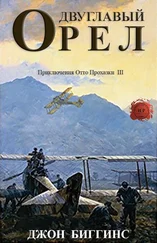“Herr Leutnant, Herr Leutnant, you will come quick please! Herr Oberleutnant Schraffl not well.” I made my way to the tent while Petrescu ran to fetch Meyerhofer. I lifted the tent flap—and was greeted by an awful farmyard stench. Schraffl was lying curled up on the camp-bed, arms crossed tightly over his head, crying to himself like a small child. He had fouled his breeches. Flies buzzed about us as Meyerhofer and I tried to get him to speak. He seemed not to see us, only stared and blubbed uncontrollably in great uncouth sobs. In the end the two of us had to lift him bodily, still curled up with his knees against his chest, and load him on to the stretcher as the motor ambulance from Haidenschaft pulled up outside. The ambulance doors closed, and we never saw him again: only learnt later that he had been diagnosed as suffering from complete mental breakdown and confined to a ward for acute shell-shock cases in the Steinhof Mental Hospital outside Vienna. To my certain knowledge he was still there in 1930—and quite possibly ten years later, when the SS began its programme of “merciful release” for the incurable mental cases left over from the previous war; incidentally clearing the beds needed for the new intake.
The result, then, of my first airborne mission over enemy lines was credit—thirty aerial photographs successfully taken and one enemy aeroplane shot down—against debit: one of our own aeroplanes moderately damaged and another destroyed, since Schraffl’s Brandenburger had been so badly knocked about by its crash-landing at Vertoiba that in the end it had been written off by the inspectors: “total- havariert,” to use that characteristic Austrian official formulation. This brought Flik 19F’s operational aircraft park at the end of July 1916 down to three aeroplanes—not to speak of putting Meyerhofer and myself hors de combat for the next three days or so filling in crash reports and damage return forms, now that Hauptmann Kraliczek’s dreaded “end of the reporting month” was upon us.
Not that there was much that I could have done anyway in the flying line. As Toth and I had watched our dismantled Zoska being loaded on to a flat-bed wagon at Haidenschaft railway station the Repair Officer had told us that she would be away at the Fliegeretappenpark in Marburg for a fortnight at least. A largely peasant country, the Danubian Monarchy had never been too flush with skilled craftsmen at the best of times, and the policy of recklessly drafting every man in sight in 1914 for the war that was to have been over by Christmas had not helped matters, now that a high proportion of Austria-Hungary’s potential airframe fitters and engine mechanics were either fully occupied building railways in Siberia or lying picked clean by the crows in the fields of Poland. The Monarchy’s aircraft-repair parks were desperately short of hands. Seventy- and even eighty-year-old retired cabinet-makers were being conscripted into the factories to build airframes. Two years into the war it seemed that only the bureaucracy of the rear areas was able to meet its manning levels. Despite the ever-swelling number of procurement agencies and their insatiable demand for people to staff them, there was as yet no visible shortage of manpower in the ministries and in the munitions factory administrations—one of which was already known as “the House of Lords” because of the number of sons of the aristocracy who had been safely tucked away there for the duration.
But even if the k.u.k. Fliegertruppe on the South-West Front had been up to complement in men and aircraft, our strength would still have been inadequate for the trials that loomed ahead of us that summer of 1916. For as July turned to August we stood on the brink of one of the most haunting, if most obscure, tragedies of the twentieth century: the battles of the Isonzo. I say “battles” because there were in fact no less than eleven of them between the summer of 1915 and October 1917, when the Italian lines finally collapsed at Caporetto. That last battle would take place further up the river though, along the stretch that ran through the mountains between Flitsch and Tolmein. The previous ten battles had been fought for two blood-soaked years on one of the tiniest battlefronts of the entire First World War—the mere thirty kilometres or so between Gorz and the sea—a front so minute that a man with powerful binoculars, standing on Monte Sabotino at one end of it, could clearly see men moving on the hills above Monfalcone at the other.
Looking back on those dreadful, now almost forgotten events, I suppose that there was never a clearer illustration—not even Verdun or Passchendaele—of the aphorism that for its first three months or so the generals ran the First World War, after which the war ran the generals. Certainly, when the Kingdom of Italy changed sides in May 1915 and declared war on its former Austrian ally, its politicians and people had expected an easy and rapid victory against our sclerotic old empire, already engaged in desperate and not very successful campaigns against Russia and Serbia. A “jolly little stroll to Laibach”—even to Vienna itself—was confidently predicted in the Italian newspapers. But before they embarked upon this adventure the Italian politicians might have been advised to look elsewhere in Europe and see that, if nothing else, barbed wire and the machine gun had put an end once and for all to jolly little strolls, whether to Vienna, Berlin, Paris or anywhere else.
They might also have done well to consult their maps, because the fact is that in the summer of 1915 Italy was quite exceptionally ill-placed for a war against Austria. Everywhere along that four-hundred-kilometre frontier, from Switzerland to the Adriatic, topography favoured the defenders and hindered the attackers. As for the High Alps west of Lake Garda, forget it: in the entire three and a half years this awesome wilderness of peaks and glaciers never saw anything more serious than belts of barbed wire staked across the great silent snowfields, or ski patrols exchanging shots down the echoing ice-valleys. Nor was the terrain much more favourable among the mountains east of the Adige. The fighting of 1916—17 in the Dolomites was certainly bitter as the two armies grappled with one another for control of that chain of fantastically shaped mountain peaks east of the Marmolada. Sappers tunnelled through the rock for months on end to lay mines which permanently altered the shape of several mountain-tops. Men fought and died by the thousand in those savage battles above the clouds to capture ridges about which, before the war, even the most intrepid of rock climbers would have thought twice before scaling. Probably as many perished from avalanches and frostbite as from enemy action. But, for all its epic qualities, the war in the mountains of the South Tyrol was still a small-scale business; for even if the Italians had succeeded by some stupendous effort in dislodging our armies from the first ridge of the Alps, they would only have found themselves facing a second, even higher ridge, with nothing beyond it more vital to the Central Powers than the shuttered-up tourist hotels of Innsbruck.
That left the easternmost sector of the Austro-Italian Front: the stretch along the valley of the Isonzo from the Carnic Alps southwards to the Adriatic, along the western edge of what is now Yugoslavia. So it was that a lonely, picturesque, fast-flowing mountain river which hardly anyone had ever heard of became to all intents and purposes the entire Austro-Italian Front: a miserable little parody of the more grandiose destruction taking place on the Western Front, a winding ribbon of smashed villages and silent forests of pine and chestnut reduced to vistas of blackened stumps. Eighty kilometres it ran, winding down from the Alps at Malborgeth through Flitsch and Caporetto and Tolmein to reach the Adriatic at Monfalcone where, in the summer of 1916, the trench lines ran across the Cantieri Navale shipyard and the rusting, bullet-pocked hulk of a half-finished ocean liner still sat forlornly on the slipways, stranded in the middle of no man’s land.
Читать дальше












